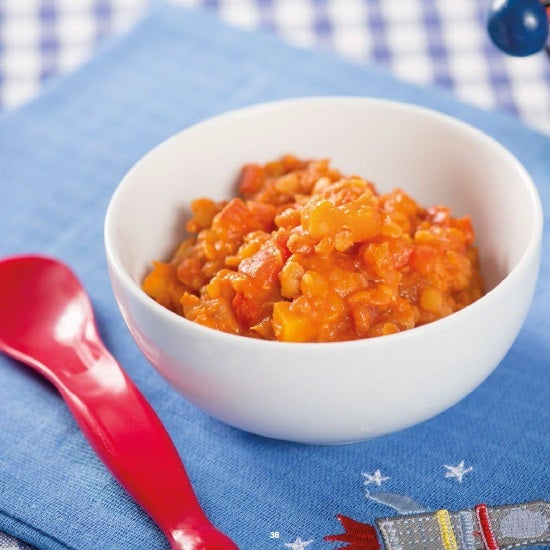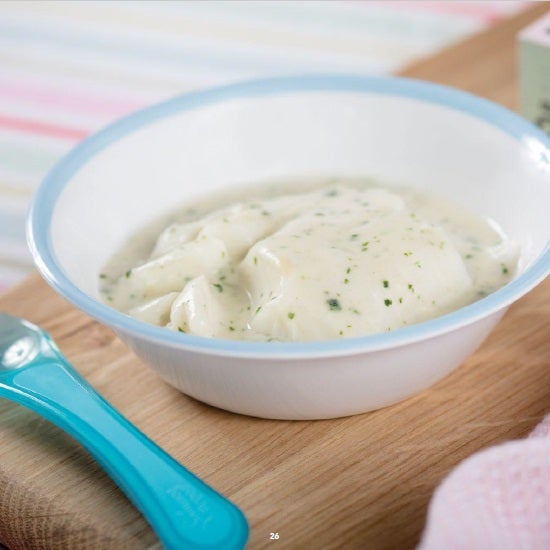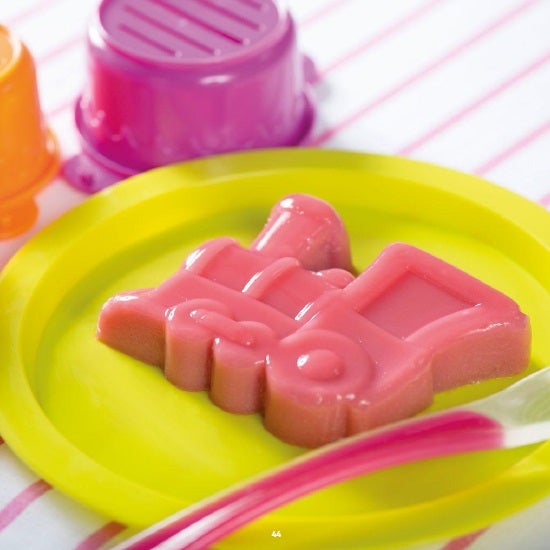
Nestlé Health Science UK Statement on Demand for Specialist Infant Formulas for Cows’ Milk and Multiple Food Allergies
We believe breast milk is the best food for infants. When in consultation with their healthcare professional, mothers and families find that optimal breastfeeding is not possible due to their infant’s medical condition, formulas for special medical purposes play a vital role in providing essential nutrients to infants. We have a global commitment to market breast-milk substitutes responsibly.
This website is about the management of cows’ milk protein allergy and nutritional solutions intended for infants. By continuing on this website, you accept that Nestlé Health Science supplies the information at your own request.
Are you a healthcare professional (HCP) or a parent?
CMPA weaning recipes
The following recipes, developed with leading dietitians from across the UK, will help you to prepare milk-free recipes for your child. As you grow in confidence and as your child grows, you may be able to adapt family meals to make them suitable for CMA.
Weaning stages
Our weaning recipes are split into different stages, which are appropriate for different children. Before introducing food into your baby's diet, always consult with your healthcare professional.
- Stage 1 ‘starting off’ covers the introduction of smooth purées in small quantities. First, establish your baby on vegetables and fruit, then introduce meat, fish or lentils.
- Stage 2 ‘moving on’ gradually introduces mashed and lumpier foods. These encourage a child to chew. Servings of these foods can still be small.
- Stage 3 ‘family meals’ is when older children can begin to feed themselves. Regular family recipes can be adapted to suit this stage of weaning – e.g. with no salt or added sugar.
Make sure you check labels
One of the most important aspects of weaning a baby with CMPA is to make sure you’re always checking labels and ingredients lists, even if you’ve brought the product before!
Prepacked food sold in the UK and EU are required to display allergens – including cow’s milk – clearly on the label. For example, if a product contains milk, the word must be emphasised in bold or italics for quick and easy recognition.
For loose foods in bakeries, delis, restaurants, etc, ingredient information must be available on request, so be sure to ask if products contain milk. If information can’t be provided, it’s best to avoid.
If a food item doesn’t clearly state the ingredients, it’s best to air on the side of caution and avoid it.
It’s also important to note that milk can come in many forms so you should also check the labels for the following ingredients:
- Milk powder
- Milk drinks
- Cheese
- Butter
- Margarine
- Yoghurt
- Cream including sour cream
- Casein
- Milk solids including milk sugar solids
- Whey including whey syrup sweetener
- Lactose
The above list is non-exhaustive and if you’re unsure what to look for, consult your dietitian or health care advisor for more information.
Top tips for weaning a baby with CMPA
- Breastfeed to start
Breast milk contains all the nutrients your baby needs in the first 6 months of life and provides protection against infections.
If for any reason you are unable to breastfeed, your health care professional will help you find the suitable formula for your baby.
- Look at for signs that your baby’s ready for weaning:
According to the NHS, there are 3 clear signs which clearly demonstrate that your baby’s ready to start eating solids. These signs will appear from around 6 months of age and are:
- Swallowing food and not spitting it back out
- Remaining in a sitting position whilst holding their head steady
- Coordinating their eyes, hands and mouth so they can look at, pick up and put their food in their mouth
- Introducing other foods to your baby’s diet
Even though your baby may have an allergy to milk, you should aim to introduce a variety of different foods and flavours (including wheat, soya, egg, fish and nuts) into the weaning diet, avoiding milk of course.
However, if your child has eczema or has had a reaction to another food other than milk, you may be advised to introduce these higher allergenic foods in only a small quantity for the first couple of times and discuss any concerns with your health visitor or dietitian.
- Encourage fun at mealtimes
Make mealtimes a positive experience and try to include your baby in the following, if possible:
- Family mealtimes
- Eating with others
- Eating with other children – this will help develop good eating habits and make mealtimes more relaxed
- Just keeping trying
Don’t worry if your baby doesn’t seem keen on new food, and it often takes between 8 to 10 tries for a baby to accept a food type.
If you’re weaning a baby with CMPA and want more information on what foods to avoid, check out our CMPA feeding guide, next.
Footnotes and abbreviations:
CMA, cows’ milk allergy
Disclaimer:
Information on this page is only intended for parents, or caregivers, with infants who have already been prescribed Althéra® or Alfamino®
IMPORTANT NOTICE: Mothers should be encouraged to continue breastfeeding even when their babies have cows' milk protein allergy. This usually requires qualified dietary counselling to completely exclude all sources of cows' milk protein from the mothers’ diet. If a decision to use a special formula intended for infants is taken, it is important to follow the instructions on the label. Unboiled water, unboiled bottles or incorrect dilution can make babies ill. Incorrect storage, handling, preparation and feeding can eventually lead to adverse effects on the health of babies. Formula for special medical purposes intended for infants must be used under medical supervision.


